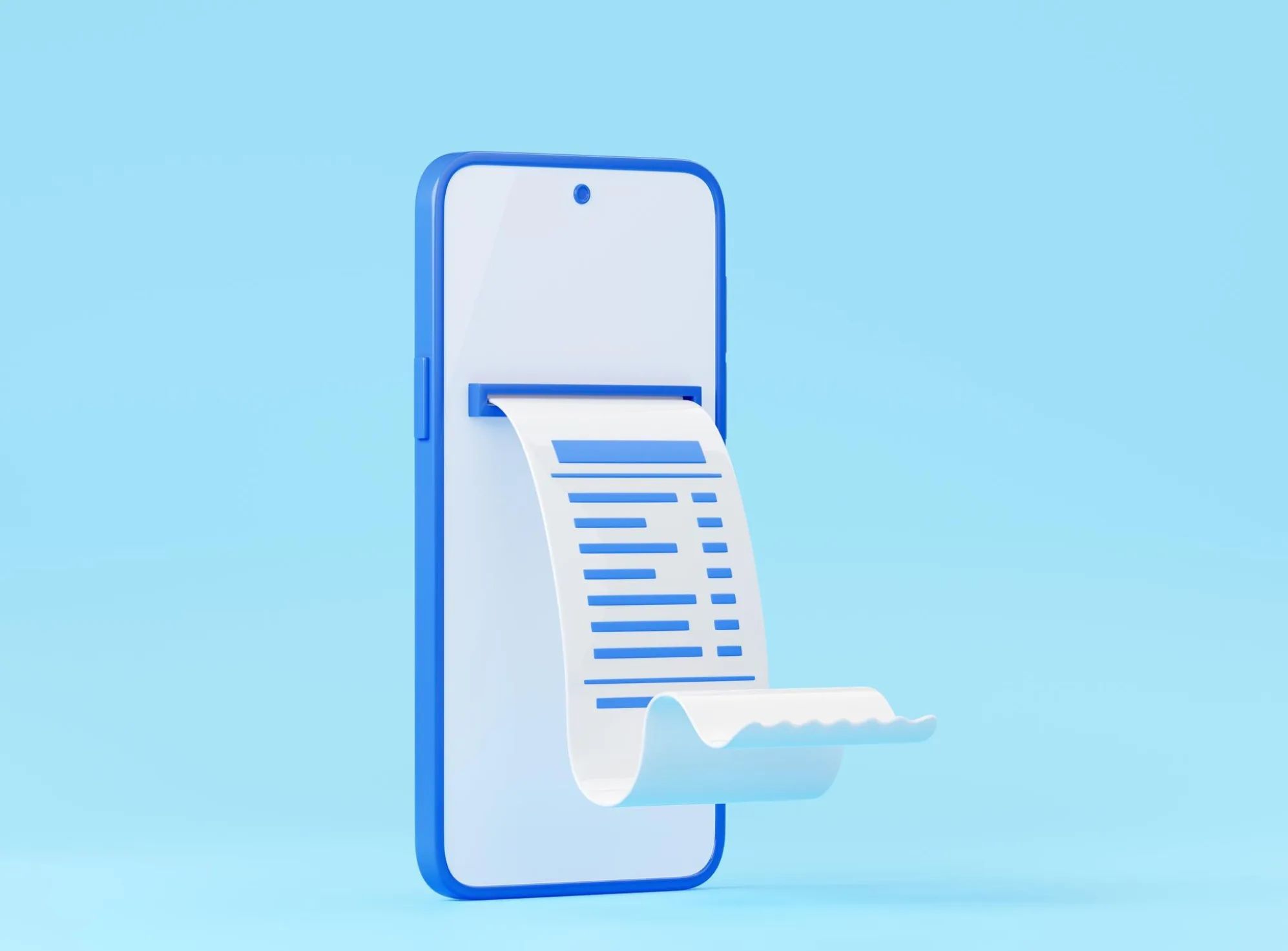Digital Invoice vs PDF. Are They the Same?
In today’s evolving business landscape, invoicing has gone digital. But not all digital formats are created equal. Many companies confuse digital invoices with PDF invoices, assuming they serve the same purpose. In reality, the difference between the two is significant—not just in format, but also in functionality, compliance, and integration capabilities.
So, are they the same? The short answer is no. Let’s unpack why and how companies can benefit by understanding the difference, especially when comparing leading providers like Edicom, Seres, and B2Brouter. Ultimately, we’ll show why Easyap stands out as a more complete solution.
What Is a PDF Invoice?
A PDF invoice is essentially a digital representation of a paper invoice. It is a static document generated by software like Excel, Word, or an accounting system and then saved or sent as a PDF file. While it is digital in format, it is not interactive nor machine-readable in a standardized way. For example, extracting data from a PDF for automated processing usually requires OCR (optical character recognition) or manual input.
Pros of PDF Invoices:
- Easy to create and send via email.
- Universally readable on any device.
- Can be visually designed and branded.
Cons of PDF Invoices:
- Not standardized for automation.
- Prone to manual errors.
- Requires additional tools for validation, extraction, or compliance.
- Often not accepted in regions where e-invoicing is mandated by law.
What Is a Digital or Electronic Invoice (E-invoice)?
An electronic invoice, often referred to simply as an e invoice, is a structured digital document created, transmitted, received, and processed entirely in electronic format. It uses standardized XML or other structured data formats that comply with government regulations or industry norms. This format allows seamless automation, validation, and integration with ERP systems and tax authorities.
Pros of Digital Invoices:
- Fully automatable and system-readable.
- Compliant with tax regulations in many countries.
- Reduces human error and processing time.
- Allows direct integration with finance systems and platforms.
Cons of Digital Invoices:
- Requires proper infrastructure or platform.
- May involve initial onboarding or compliance setup.
Key Differences at a Glance
| Feature | PDF Invoice | Digital/Electronic Invoice |
| Format | Unstructured (static) | Structured (e.g., XML, UBL, EDIFACT) |
| Readable by systems | No (OCR needed) | Yes (machine-readable) |
| Automation capabilities | Very limited | High |
| Legal compliance | Rarely sufficient | Often mandatory in many regions |
| Data extraction | Manual or OCR | Automatic |
| Integration with ERPs | Indirect | Direct and real-time |
| Archiving & Audit | Manual | Digital traceability and archiving |
Why Does the Difference Matters?
The distinction between PDF and electronic invoices isn’t just technical—it’s operational and regulatory. As countries tighten their tax controls and mandate real-time data exchange with their fiscal systems, PDF invoices often fail to meet those requirements. Businesses that continue using them risk non-compliance, delays, and financial penalties.
In contrast, digital invoices streamline workflows, reduce processing costs, and improve accuracy. They enable companies to implement end-to-end automation and focus on strategic financial operations rather than paperwork.
Comparing the Top e-Invoicing Providers
To better understand how the shift to digital invoicing plays out in the market, let’s compare some of the leading e-invoicing platforms: Edicom, Seres, B2Brouter, and Easyap.
| Feature / Provider | Edicom | Seres | B2Brouter | Easyap |
| Target Market | Large Enterprises | Large Enterprises | SMEs and freelancers | All business sizes |
| Regulatory Coverage | Europe + Latin America | Europe | Spain and Latin America | Global (with strong EU focus) |
| Integration with ERPs | yes | yes | Basic integrations | yes |
| Ease of Use | Complex UI | Moderate | Simple UI | Intuitive, minimal training |
| Support for Multiple Formats | Yes | Limited | Limited | Full format compatibility |
| Implementation Time | 4–6 weeks | 3–5 weeks | 1–2 weeks | 1 week or less |
| Cost Flexibility | High setup and license fees | Medium | Freemium with limits | Transparent, scalable pricing |
| e invoice Compliance Updates | Slow | Moderate | Manual | Real-time, automatic |
| Customer Support | Standard | Email-focused | Email only | Real-time multilingual support |
| Strengths | Compliance, security | Good for large firms | Budget option | Speed, compliance, UX |
Why Easyap Outperforms the Competition
While Edicom and Seres focus on large corporations and offer solid compliance tools, they tend to be rigid and expensive. B2Brouter, meanwhile, appeals to freelancers and smaller operations but lacks scalability and advanced features for growing businesses.
Easyap, in contrast, strikes a balance that few can achieve. It combines real-time compliance updates, fast implementation, and robust integration—all with a user-centric approach. Whether you’re a small business or a multinational, Easyap offers flexibility, cost-efficiency, and a simplified path toward full e-invoicing adoption.
Here are the top reasons businesses switch to Easyap:
- Rapid deployment with minimal technical requirements.
- Affordable pricing models based on actual usage.
- Multinational compliance coverage with constant updates.
- High-quality customer support, available in multiple languages.
- Simple onboarding with guided migration from PDFs to full e invoicing workflows.
PDF vs Digital in Spain’s B2B Sector
Consider the current regulatory environment in Spain. The government has mandated the use of Facturae format for certain business transactions. While a PDF may still be used for record-keeping, it is not valid for compliance. Businesses that continue using PDFs must manually upload or convert them—wasting time and resources.
Companies using Edicom or Seres may face high costs to ensure compatibility with the government’s XML standards. In contrast, Easyap offers Facturae integration out of the box, with automatic updates and seamless ERP syncing—making the transition effortless.
Why Moving Away from PDFs Is Urgent
Still using PDF invoices? You’re not alone, but you are falling behind. Here’s why it’s time to upgrade:
- PDFs are passive: They can’t talk to your systems or those of your suppliers or tax agencies.
- Risk of rejection: Increasingly, tax authorities are rejecting non-structured documents.
- Lack of transparency: Auditing PDF records is difficult, and data extraction is error-prone.
- Poor scalability: As your business grows, PDF-based processes will become a bottleneck.
Switching to true digital invoicing isn’t just about compliance. It’s about operational excellence.
Transitioning from PDF to Digital: How Easyap Makes It Simple
One of the key challenges for businesses is transitioning from traditional PDF workflows to digital invoicing. Easyap offers tailored solutions to streamline this shift:
- Data Mapping: Easyap helps map your current invoice fields into compliant XML or UBL formats.
- Automated Extraction: For companies with legacy PDFs, Easyap offers smart OCR and machine learning tools to convert and standardize the content.
- Integrated Sending and Receiving: Send and receive invoices in compliant formats directly from your existing ERP.
- Training and Onboarding: Easyap provides hands-on support during onboarding, ensuring minimal disruption.
Conclusion
A PDF invoice may be digital in appearance, but it’s not designed for automation, compliance, or data exchange. On the other hand, a digital or e invoice is structured, actionable, and built for integration with modern financial systems and tax authorities.
As businesses grow and regulations become more demanding, relying on static PDF invoices is no longer sustainable. Platforms like Edicom and Seres offer partial solutions, but they often come with complexity and cost. B2Brouter is lightweight but lacks the tools and flexibility growing companies need.
Easyap, however, delivers the full package—speed, affordability, compliance, and user-friendliness, making it the clear choice for companies that want to leave PDFs behind and embrace real digital invoicing.



